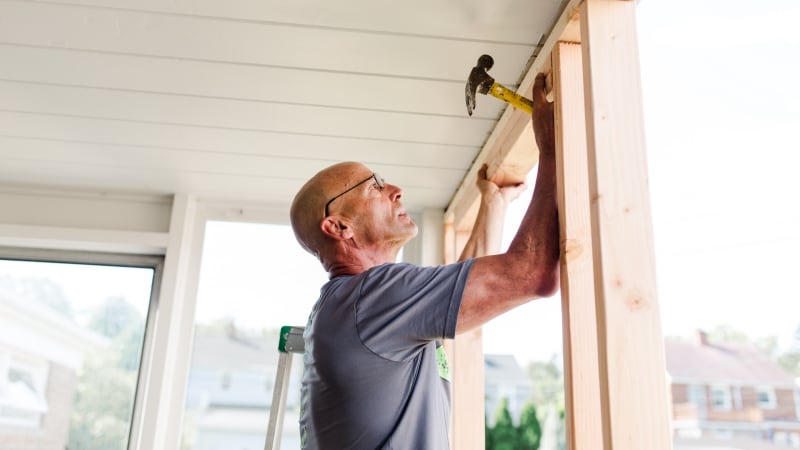How to help get rid of PMI (Private Mortgage Insurance)

Quick insights
- Private mortgage insurance, or PMI, is a safeguard that mortgage providers often require when homebuyers provide a down payment less than 20% of the home’s purchase price on a conventional mortgage.
- The most common ways to get rid of PMI include waiting until you qualify for automatic termination, requesting PMI cancellation, paying down your mortgage earlier or refinancing.
- Weighing the benefits, costs and potential risks of removing PMI can help homeowners make informed decisions to strategically remove PMI and take control of their finances.
Private mortgage insurance, or PMI, is a common term in the world of homeownership. PMI represents an additional fee mortgage lenders usually require if your down payment is less than 20% of the home’s value. PMI protects the lender in case you default on the loan. While PMI increases your monthly mortgage payments, there are strategies you can implement to help get rid of it. In this article, we will cover some savvy ways on how to get rid of PMI and lighten your mortgage burden.
When does PMI go away?
As mentioned above, PMI is generally required by lenders when a homebuyer makes a down payment of less than 20% of the home’s purchase price. The main objective is to protect the loan provider if the borrower defaults on the loan. Under the Homeowners Protection Act of 1998, homeowners with certain types of mortgages have additional rights regarding the removal of PMI. According to the Consumer Financial Protection Bureau, mortgages for single-family principal residences that originated after July 29, 1999, must be automatically terminated by the mortgage provider once the borrower’s LTV ratio reaches 78% of the home’s original value or when the loan reaches the midpoint of its amortization period, whichever occurs first.
To fully understand when PMI can be removed from your monthly payments, it can be important to consider the following metrics:
- Loan-to-value (LTV) ratio: Loan-to-value ratio compares the amount of the loan to the appraised value of the home. PMI can generally be removed once the LTV ratio drops below 80% of the property’s original value. Removing PMI can happen through a combination of paying down your mortgage balance and home appreciation.
- Automatic PMI termination: As stated above, loan providers are required to automatically cancel PMI once the borrower’s LTV ratio reaches 78% of the original value of the home or when the loan reaches the midpoint of its amortization period, whichever occurs first.
- Request PMI removal: You can request the cancellation of PMI once your LTV ratio reaches 80% of the property’s original value or lower. You may have to submit a formal request to your loan provider, along with documentation such as proof of home value and a solid payment history.
- FHA loans: Mortgage loans insured by the Federal Housing Administration (FHA) loans, require a Mortgage Insurance Premium (MIP) instead of PMI. MIP is required for the life of the loan if the down payment is less than 10%. If your down payment is at least 10% or more, MIP goes away after 11 years.
How to get rid of PMI
There are various ways to get rid of PMI. Below are a few different approaches on how to get PMI removed:
- Wait until you qualify for automatic termination of PMI: It may be a good idea to monitor your LTV ratio to make sure it reaches the threshold for automatic termination. This is usually 78% of the original home value.
- Request PMI cancellation: When your mortgage balance reaches 80% of the property’s original value, you can request PMI cancellation. Keep track of your mortgage balance and property value.
- Pay down your mortgage earlier: If you are in a comfortable space financially, consider making additional mortgage payments to accelerate the reduction of your mortgage balance.
- Refinance your mortgage: You may want to explore refinancing options if your home has appreciated significantly or if interest rates have dropped since you initially obtained your mortgage loan.
- Reappraise your home: You can reach out to a professional appraiser and request an appraisal of your home to determine its current market value.
- Expand or renovate your home to increase its value: It may be beneficial to invest in home improvement projects that can increase the market value of your home.
Having some level of knowledge on how to remove private mortgage insurance can help homeowners save money in the long term. By using these strategies, homeowners can take steps to eliminate PMI from their monthly mortgage payments.
Benefits and drawbacks to removing your PMI
Understanding the benefits and drawbacks of removing your PMI can help homeowners make informed decisions.
Potential benefits:
- Cost savings: Eliminating PMI from your mortgage payments can lead to substantial savings over the life of your mortgage loan.
- Equity building: PMI removal often requires a certain LTV ratio, which means you are building more equity in your home. Building equity can increase your overall net worth and long-term financial stability.
- Improved cash flow: With a lower monthly mortgage payment, you will probably have more disposable income each month. Removing PMI could free up funds for other savings, provide more flexibility in your budget and potentially reduce financial stress.
Potential drawbacks:
- Upfront costs: Some approaches of removing PMI from your monthly mortgage payment, such as refinancing, may involve upfront costs.
- Withdraw money from your bank account: In an effort to pay down your mortgage balance and get rid of PMI, homeowners may need to dip into their bank account. This can possibly leave them vulnerable to unexpected expenses or emergencies.
In summary
Private mortgage insurance plays a critical role in the homebuying process. While PMI provides lenders with protection against mortgage defaults, it can add additional costs to your monthly mortgage payment. Understanding the key points surrounding PMI removal can help homeowners make an informed decision and navigate the process more effectively. In general, PMI can serve as a bridge to homeownership for many first-time homebuyers, enabling them to achieve their dreams of owning a home.


